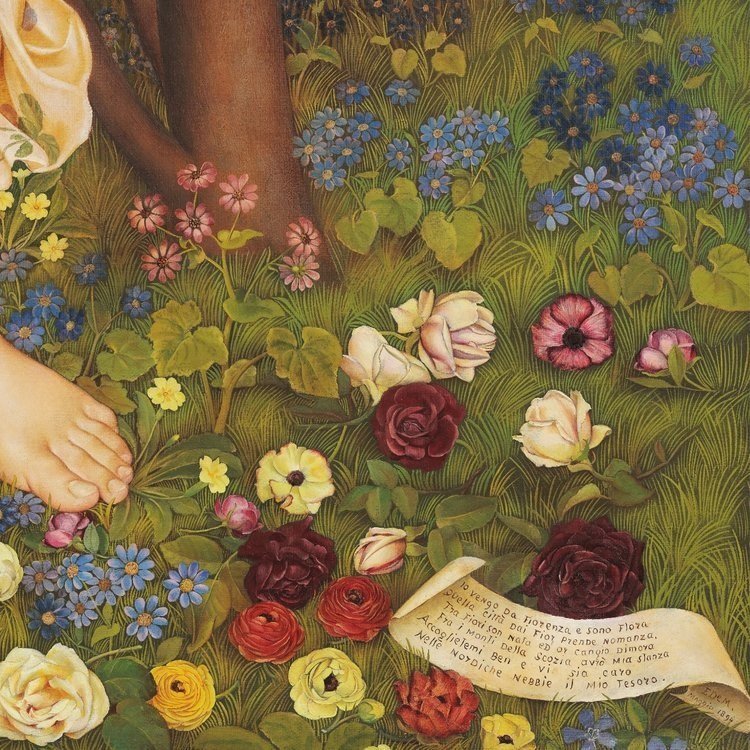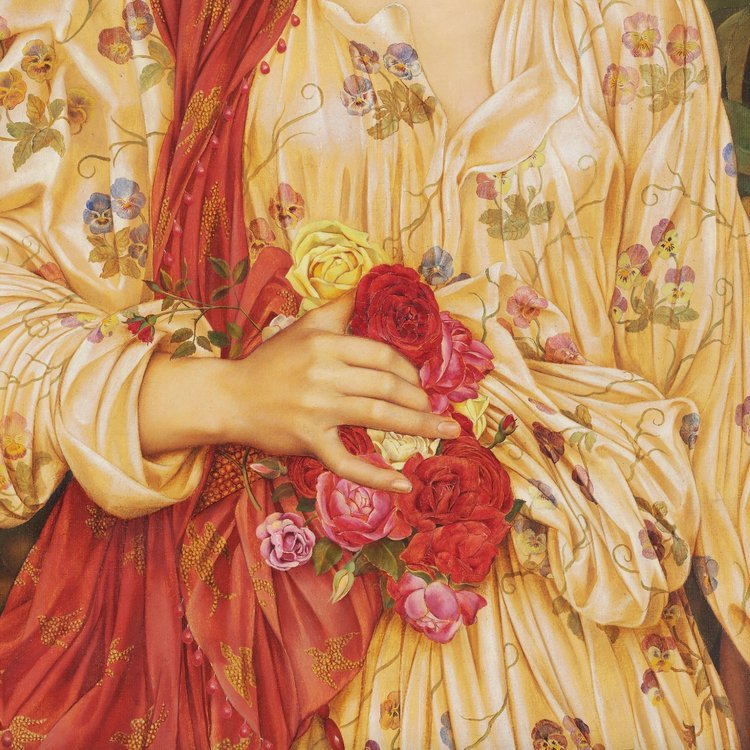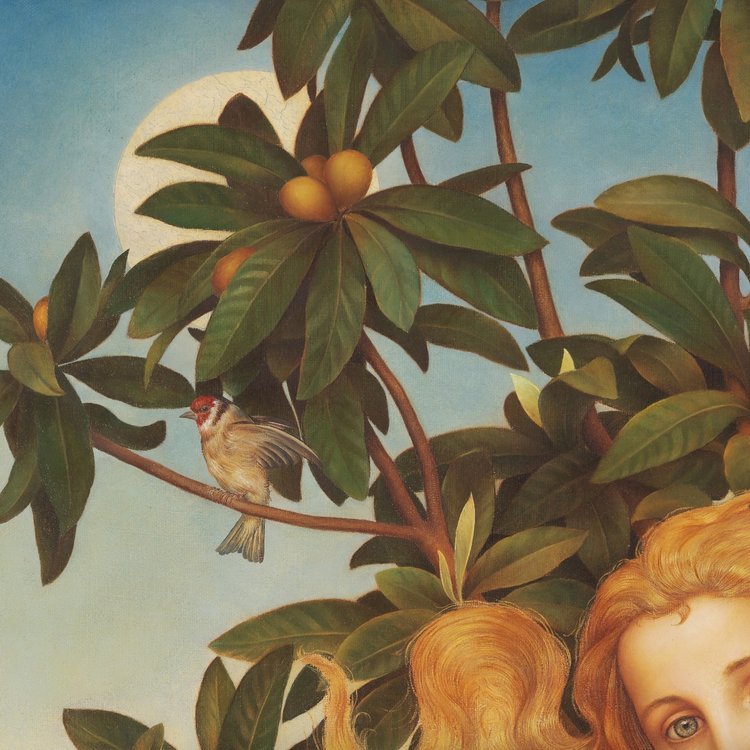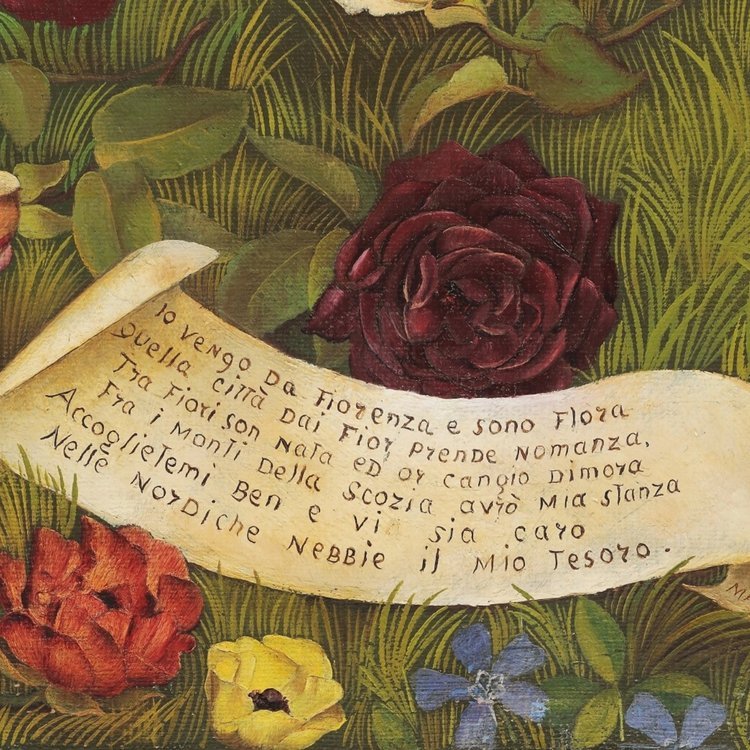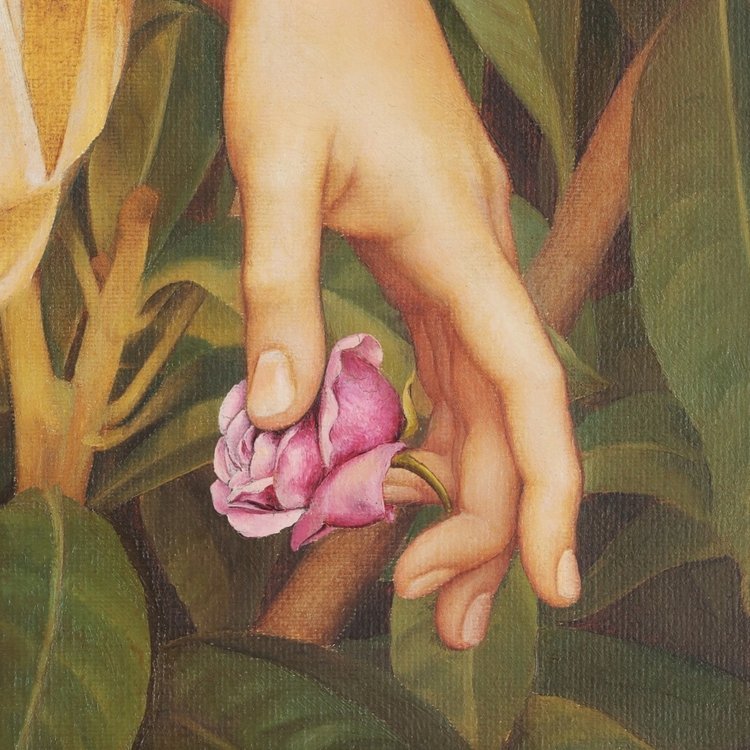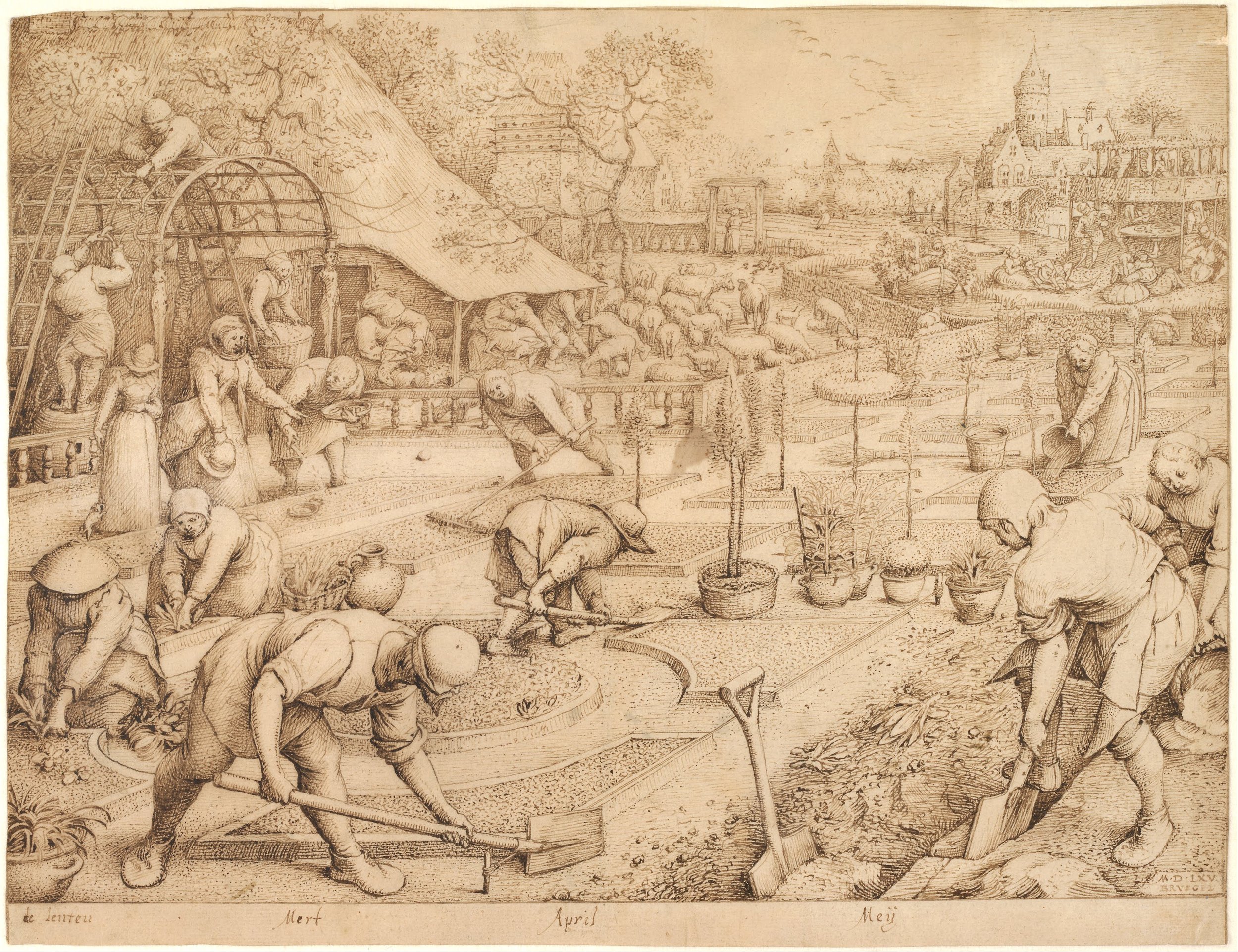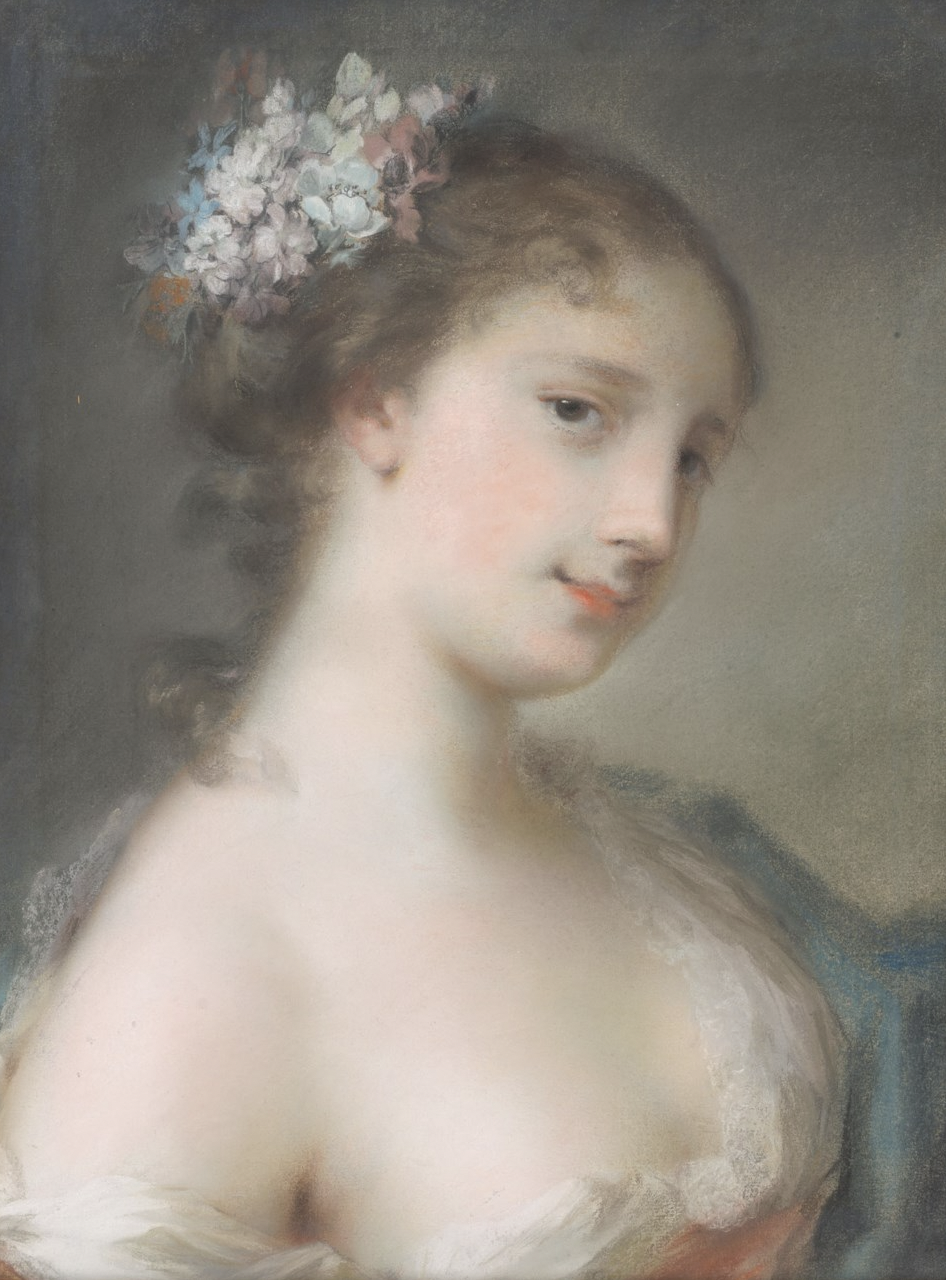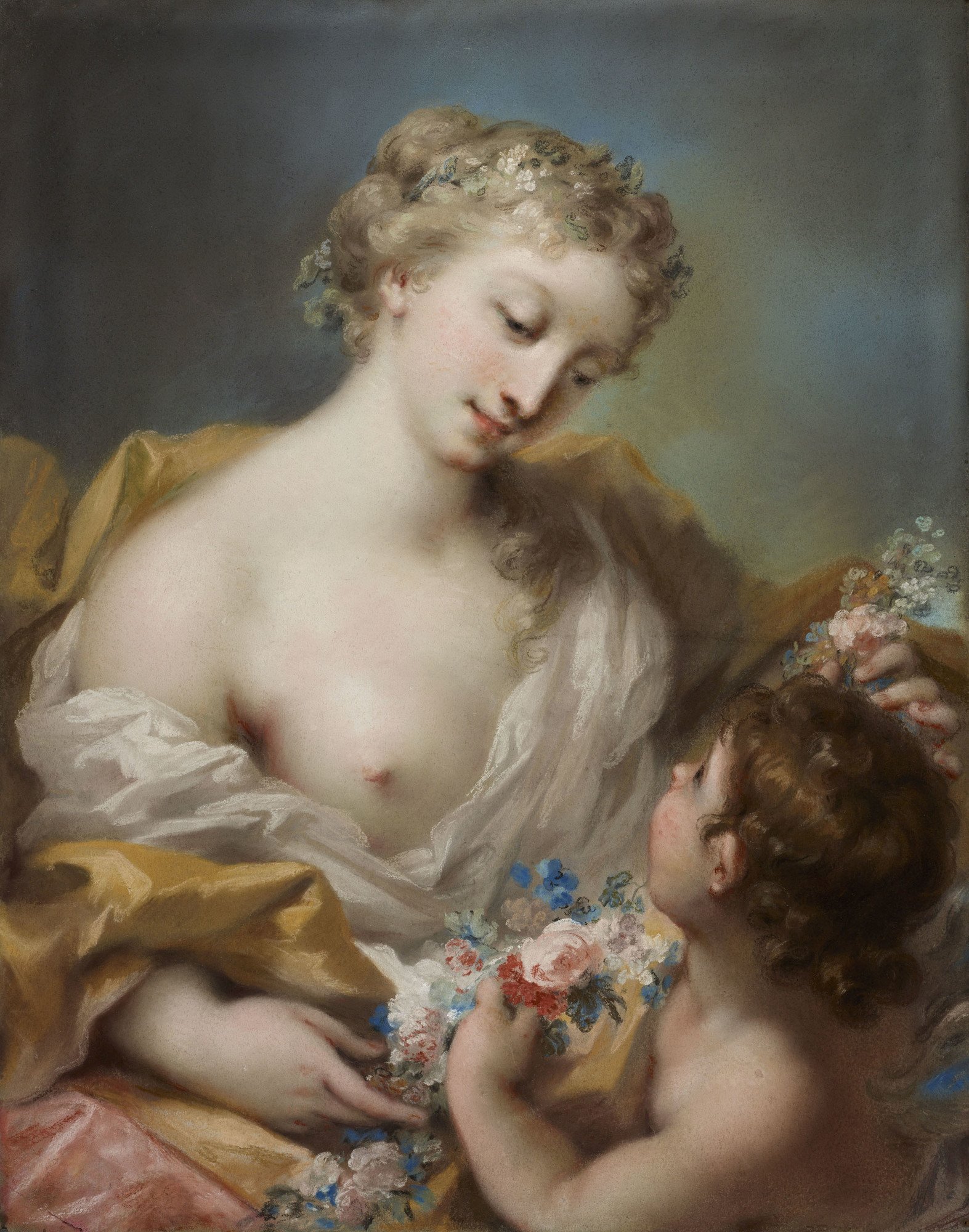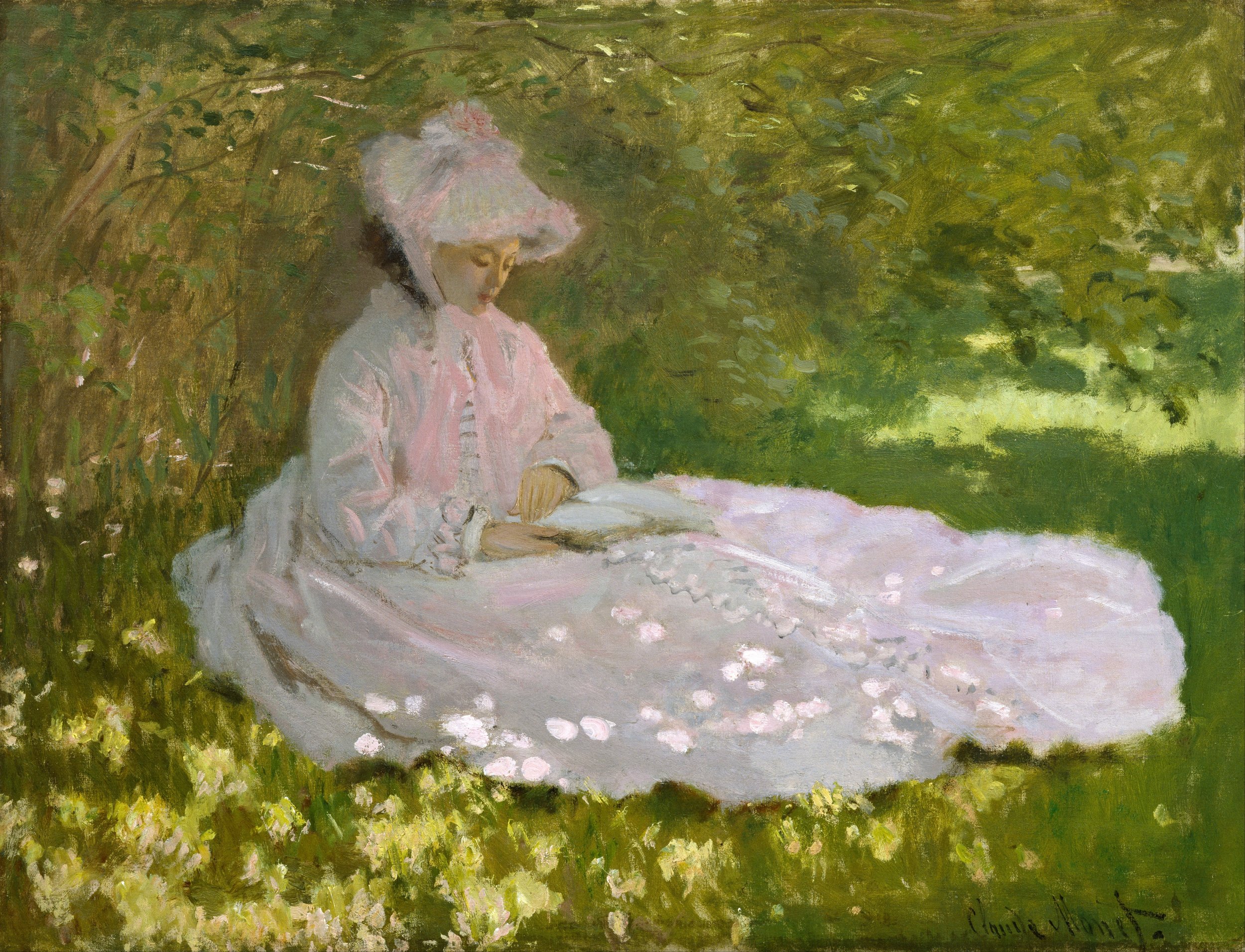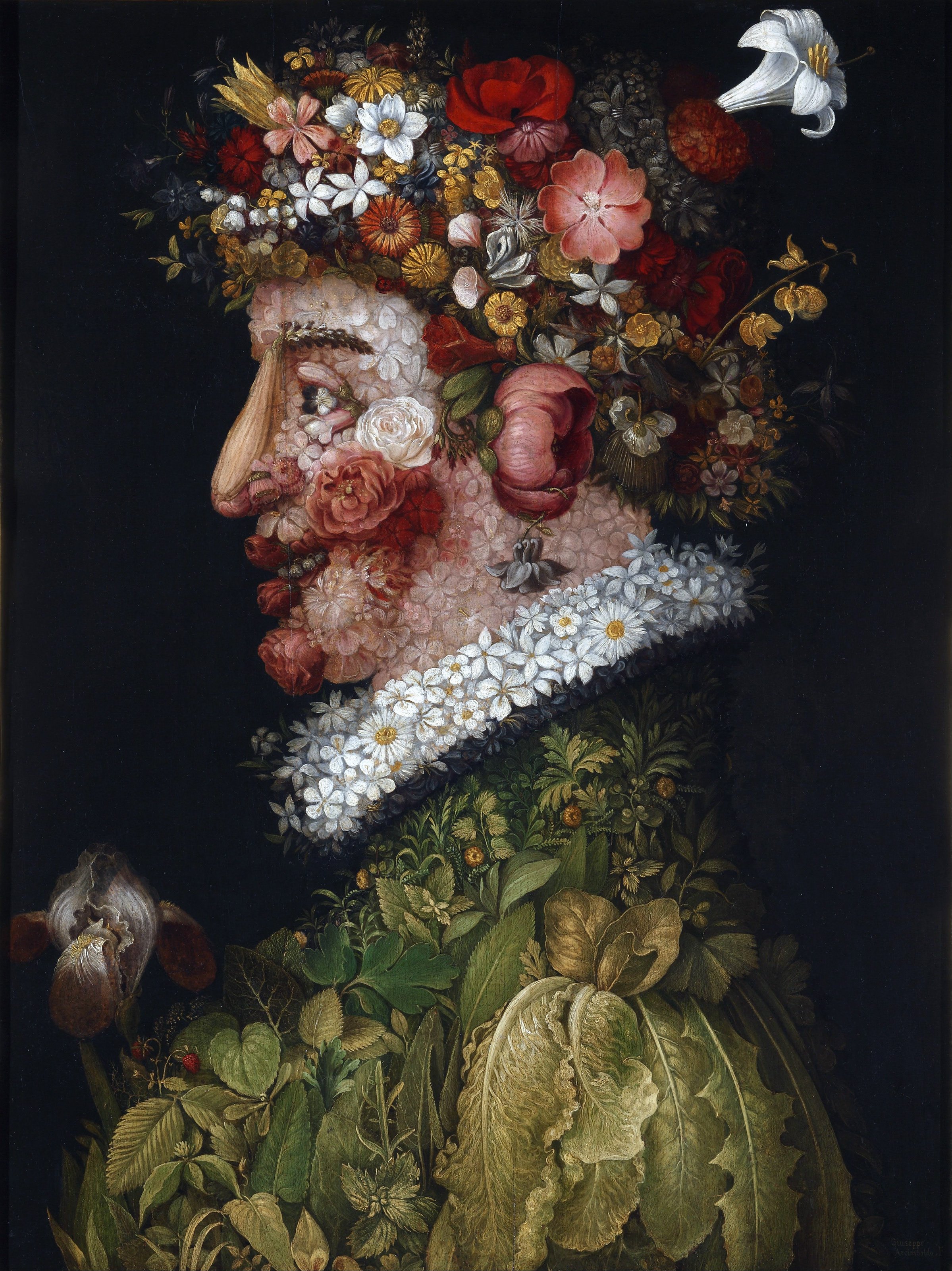Our Favourite Spring Paintings
In the Northern Hemisphere, Spring has well and truly arrived - and so we have selected some of our favourite paintings of Spring. For centuries, artists have explored themes of fertility, rebirth and growth through depicting Spring in human form, and highlighting the importance of visual representations of nature. Often depicted as a woman with flowers.
You can vote for your favourite painting via the poll at the bottom of this page, or here - and we will create a short video based on the painting with the most votes!
Primavera by Sandro Botticelli (late 1470s or early 1480s)
Possibly one of the most famous personifications of Spring, this huge tempera painting has been described as “one of the most written about, and most controversial paintings in the world” (Gloria Fossi, 1998). It shows a group of figures from classical mythology (including the three graces, and Cupid) in a blossoming orange grove. The central female figure is an allegory of Spring, or primavera in Italian.
To the far right of the scene, we see the male personification of the wind of March, called Zephyrus, kidnapping the nymph Chloris; she looks back in terror at her pursuer, with flowers already sprouting from her mouth. After Zephyrus catches her, she will be transformed into Flora, the goddess of Spring, who Botticelli shows overlapping with Chloris; now she wears a floral dress and wreath on her head, as she scatters flowers across the ground.
Primavera, Sandro Botticelli, late 1470s or early 1480s, tempera on panel, 202 x 314 cm, Uffizi Gallery, Florence (Image: Wikipedia)
2. Flora by Evelyn De Morgan (1894)
Evelyn De Morgan’s most celebrated painting Flora (1894) was heavily inspired by Botticelli. Flora is the goddess of springtime and of the city of Florence, where Evelyn lived during the winter from 1890 onwards. Although the figure of Flora is based on Botticelli’s Primavera, but Evelyn has surrounded her with lush greenery, flowers, birds and swirling draped robes to make her iconic, instantly recognisable as Evelyn’s own. It is technically perfect, showing off her skill and mastery of the medium of painting in oils on canvas. The dazzling luminosity of the picture has been achieved by her innovative use of coloured oils over gold leaf, a method of her own invention, borrowed from medieval altar pieces found in the city of Florence.
Evelyn painted for William Imrie, a Scottish shipping magnate and owner of the White Star Line, which famously created the Titanic, and Evelyn’s most prolific patron. The scroll at the foot of the picture references Scotland, Imrie’s hometown, and so acknowledges the patron’s direction of the piece.
3. Wine Drinking in a Spring Garden by unknown Iranian artist (c.1430)
Courtly couples in spring gardens were a popular theme of paintings made in Iran and Iraq during the 14th and 15th centuries. This painting, by an unknown Timurid artist, shows a group of young men offering a cup of wine to a maiden, reflecting Persian courtly ideals at the time. There are also clear references to Chinese artistic styles, such as the horizontal arrangement of the figures against a neutral background, the layering of the maiden’s body with the blossom tree, and the golden motifs on the figures’ clothing.
Wine Drinking in a Spring Garden, attributed to Iran, possibly Tabriz, c.1430, opaque watercolour and gold on undyed silk, 21.6 x 76.7 cm, The Met, New York (Image: The Met)
4. Spring by Pieter Brueghel the Younger (c.1633)
Here, Spring is shown in relation to the seasons of agricultural seasons. It was based on a finished drawing by the painter's father, Pieter Bruegel the Elder, who had produced a series of paintings of the Months. The five which survive today from the series belong to a well-established northern tradition of the representation of the months, which goes back to the calendar illustrations in medieval manuscript illuminations. Notice how in both drawings, the people are part of the wider landscape, alongside the livestock, blossoming trees and winding river. It offers a different perspective on Spring; in contrast to the traditional personifications of the season, here the artist emphasises human interactions with the land.
Spring, Pieter Brueghel the Younger, c.1633, oil on panel, 41.9 x 57.2 cm (Image: Wikipedia)
Spring, Pieter Bruegel the Elder, 1565, pen and brown ink, framing lines in gray, transfer lines, Albertina, Vienna (Image: Wikipedia)
5. Spring by Rosalba Carriera (early 18th century)
Rosalba Carriera was a Rococo artist from Venice, who played a key role in popularising the medium of pastels in 18th-century Europe. Here are three different versions of Spring by Carriera, as part of several versions of female allegorical figures representing the Four Seasons (including one version of Winter which is also a self-portrait). The whiteness and smoothness of the women’s skin, as well as the soft drapery and blossoming flowers, are typical of Carriera’s artistic style, reflective of the ideals of feminine beauty in Western Europe at the time.
6. Viewing Cherry Blossoms by Utagawa Kunisada (1847-52)
In this ukiyo-e woodblock print Viewing Cherry Blossoms in the Palace Garden in Spring, the artist Utagawa Kunisada (1786-1865) depicts a group of fashionably dressed people taking part in Japan’s cherry blossom festivals, known as hanami, which literally means ‘viewing flowers’. This traditional spring festival has been taking place all over Japan for more than 1,000 years. It originated among Japanese aristocrats who wrote poems inspired by cherry blossoms; you can read a beautiful selection of such poetry here.
Viewing Cherry Blossoms in the Palace Garden in Spring, Utagawa Kunisada, 1847-52, woodblock print (nishiki-e); ink and colour on paper, 36.2 x 75.3 cm, Museum of Fine Arts, Boston (Image: ukiyo-e.org)
7. Springtime by Claude Monet (1872)
In this painting, Monet depicts his wife, Camille Doncieux, reading in the dappled shade of a beautiful green canopy (it also has the title The Reader). It was made in Monet’s garden during the spring of 1872, when the artist was living with his family in Argenteuil, a village Northwest of Paris. Camille’s pale pink dress and bonnet seem to stand in for sprigs of blossom, among the textured green leaves and grass surrounding her. Perhaps in some ways she becomes a personification of Spring, too.
Springtime or The Reader, Claude Monet, 1872, oil on canvas, 50 x 65.5 cm, Walters Art Museum, Baltimore (Image: Wikipedia)
8. Spring by Giuseppe Arcimboldo (1563)
This remarkable painting is part of a series of The Four Seasons made by Italian artist Giuseppe Arcimboldo between 1563 and 1573. Each one shows a profile portrait comprised entirely of flowers, fruits, plants and vegetables relating to the relevant season. Today only the original paintings of Winter and Summer survive - Spring survives as part of a copied set sent to Philip II Spain.
Here, Arcimboldo has represented Spring as a woman (although her gender seems fairly ambiguous) composed largely of flowers; her skin is made of pink and white rose petals and buds, her eyebrows of lavender, her eyes of belladonna berries, and her hair of a colourful bouquet. Her green clothing is made up of a variety of foliage and vegetables, including strawberry and lettuce leaves. As with all of Arcimboldo’s imaginative botanical portrait paintings, there is clearly an element of humour and curiosity here, intended to amuse viewers at European courts.
Spring (La Primavera), Giuseppe Arcimboldo, 1563, oil on canvas, Real Academia de Bellas Artes de San Fernando, Spain (Image: arthistoryproject.com)
9. Allegorical Figure of Spring by Jacopo Tintoretto (c.1555)
Venetian painter Tintoretto personifies Spring as a young woman with a spray of flowers, almost as if growing from out of her womb. As in so many depictions, flowers here represent rebirth, fertility and the reawakening of nature. This painting is part of a series of the four seasons which were once displayed together on the ceiling of the Palazzo Barbaro in Venice. When the writer Carlo Ridolfi saw the paintings in 1648, he described them as a ‘capriccio of dreams’ - a musical ensemble filled with ‘things that come into the minds of men while they are dreaming.’
Vote for your favourite and we will create a short video based on the painting with the most votes…
(Written by Esme Garlake on behalf of Athena Art Foundation, May 2023)

